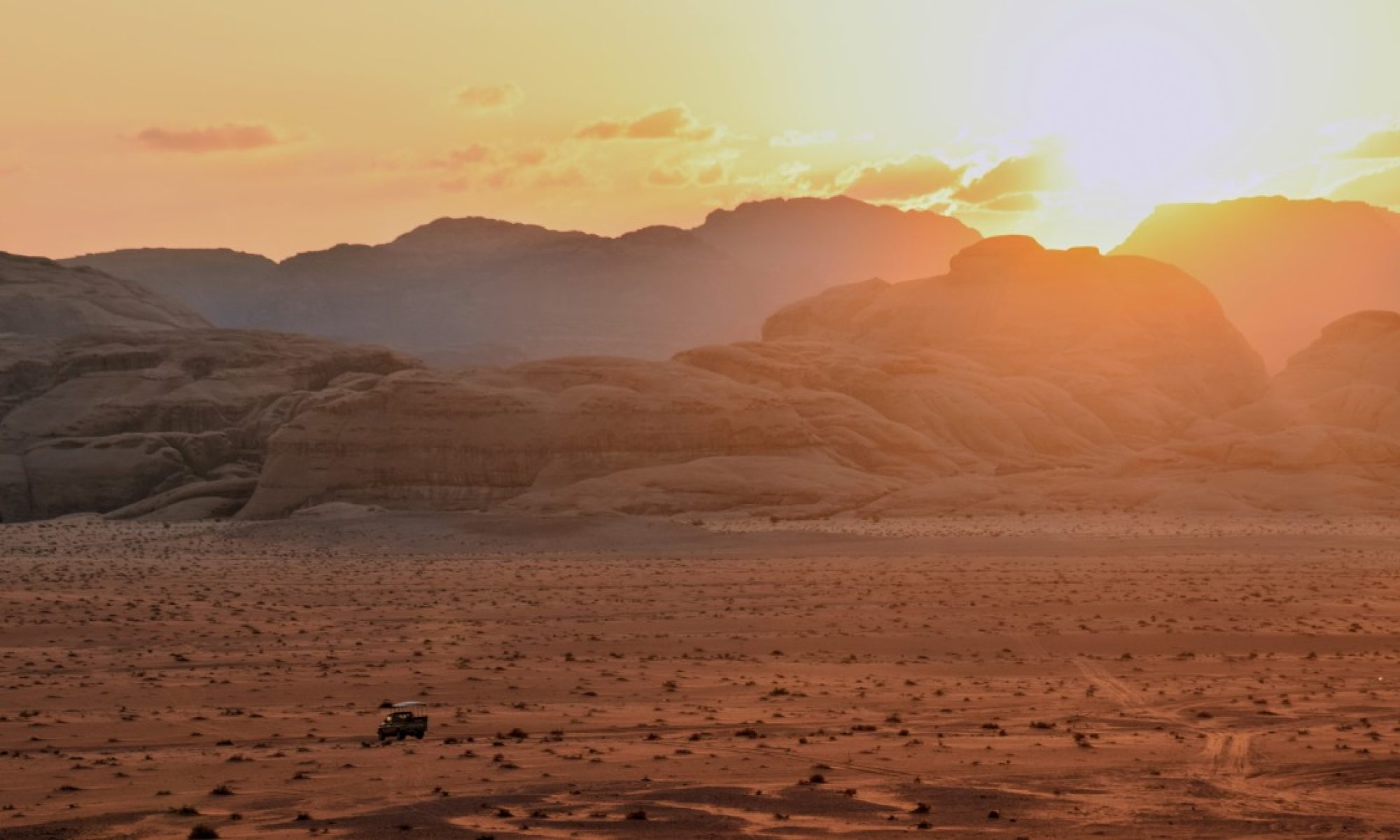About the Jordanian Desert Castles
Essentially, the Desert Castles are a group of castles across the Levant. The Umayyad built most of them between 660 and 750 during the Umayyad Caliphate. In the past, the castles connected trade routes between Medina and Damascus, the former capital of the caliphate. Up to now, the original use is not always clear. Scholars suggest the castles were had several purposes such as hunting, as rest stop for caravans or as meeting point for political discussions.

The Jordanian Desert Castles are mainly located in the semi-arid East of Jordan. Previously, I wrote already about Qasr Kharanah, Qasr Amra as well as the Azraq Wetlands. Further I visited Qasr Mushatta, Qasr, Dab’ah, and Mukawir. Other impressive castles include Azraq Castle, Qasr Al-Hallabat, and the smaller Hammam As-Sarah. As you are already on tour, make sure to include Umm El-Jimal in your visit. It is an ancient city built from black basalt near Mafraq. However, you can not visit all of these sides in one day, that’s why I tell you about my recent experience at some different Desert Castles.
When to go and where to stay
Dry Winter days are the perfect time to explore the Desert Castles, as there is no shadow in these regions and it gets extremely hot in Summer. You can create a loop tour from Amman and stop at two to three of the sites I suggest. However, if you intend to see all the castles in one trip, I recommend a stay at the Azraq Lodge. You can create your own tour depending on what interests you most and how much time you have.

Azraq Castle
Azraq Castle is completely built of black basalt stone. It is right in the city center of Azraq about 1.5 hours drive form Amman. You can find an old original door, a huge courtyard, different buildings and rooms. The ruins are preserved pretty well and with its color it makes a great contrast to the other Desert Castles. As opposed to today, Azraq was a region rich of water, hence the Azraq Wetlands. But due to the pumping of ground water to Amman and Zarqa, it was dried out some decades ago. In the 90ties then, Jordan started to conserve and rehabilitate the region. You can combine of course a visit to Azraq Castle with the Azraq Wetlands and also consider an overnight stay at the Azraq Lodge run by Wild Jordan.

Ayraq Castle 
Black Arches 
Face 
Courtyard 
Exploring Ayraq Castle
Qasr Al-Hallabat & Hammam As-Sarah
Qasr Al-Hallabat is one of the nicest Desert Castles. It spans over a large area with several buildings. The combination of beige and black stones make it especially interesting. Recently, the Tourism board, with help of European projects, built a visitor center on site. There you can have a look at some interesting arches, facades, as well as stones with inscriptions in many different languages. Over many hundreds years different peoples and ethnic groups have inhabited and used the castles. Therefore, you can find engravings in Nabataean, Aramaic, Arabic, Latin, Greek and many more. Apart from that you can find different rooms, a marble courtyard, and a well. In some corners you find engraved facades, arches and mosaic floors. From the main building you can overlook an area that hosts several more ruins indicating something like a city.

Exploring Qasr Al-Hallabat 
Facades 
Black and White 
Garments 
Inscriptions 
Mosaic 
Contrast 
Well 
at the Visitor Center
A short drive about 5 minutes from Qasr Al-Hallabat you can find Hammam As-Sarah. It is a small bath, not super impressive but you can pay a visit, since it is close by. You can see the renovation and it also has a nice front gate.

Hammam As-Sarah 
from outside 
Gate 
At Hammam As-Sarah
Umm El-Jimal
Umm el-Jimal, also known as Umm al-Jimal is a large city in North-East Jordan, near Mafraq. The ancient city known for of Byzantine ruins is not part of the desert castles. However, you can combine it in a loop tour from Amman, or visit it alone. At the entry of Umm el-Jimal you can explore inscriptions in a small museum. The museum is inside old stables and explains the history and development of the site over time. The largest event was a major earth quake around 750 AD, which destroyed most of the building. People however lived continuously from the Nabateaen to the Abbasid period. Today on area of several square kilometers, you can discover ruins and facades of several houses, churches, and water systems. See below video for more information on Umm el-Jimal, the Mother of Camels.








For more on Traveling Jordan see my article on The Best Places and Experiences in Jordan and When to go. If you like hiking make sure to read Hiking the Jordan Trail from Dana to Petra. For the Spring and Summer Season check out my article on Hiking Jordan’s Best Dead Sea Valleys.




